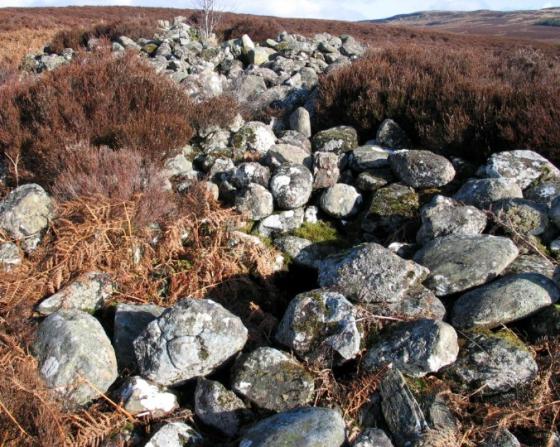I had immediately seen the comparison with Irish court tombs. The one I first comment on faces east, is that a common alignment? If it is then this is a major difference from the Irish court tomb - they very rarely face east (if at all).
court, segmented axial chamber, subsidiary chambers, long cairn .... says it all really. You really could be describing most Irish CTs. Irish CTs used to be called 'horned cairns', which I actually like, but it doesn't help with full court editions :-) I am still uncomortable with names incorporating the word 'tomb', because with some it seems they were never used as such and with others we only know that this was there final purpose.
As for should jargon be used? Yes, if it is commonly used and can be found in books or on the net (or in a glossary <cough>) - otherwise they're all feckin' dolmens! GGggrrrr!!!!
I asked about this term because I thought "if I ain't heard it, then I bet there's a few others on here in the ame boat." I also wanted to know more about these monuments for the reasons stated above. Jargon does get tricky though when crossing boundiaries. For instance, the notes refer to 'portal stones' on the Clyde tombs, but in Ireland you would only ever use that term for portal tombs - court tombs have 'entrance jambs'.
With European Megalithia coming together at an amazing pace an end is in sight to the insular attitudes of many region-specialising archaeos. Sooner or later the whole gamut is going to have to be standardised terminology-wise.*
When people come onto TMA (or any other reputable megalithic website for that matter) they come for many reasons: maybe to find out what other think of a site; maybe to find out what something is; maybe both; maybe for some completely different reason. Regardless of what path you take through life there's nowt wrong with a little educationx3 along the way is there.
*This is not to say that local specialists will become obsolete, but that they will have to look further afield to find comparisons. Just because a type of monument is concentrated in one part of the UK doesn't mean it's unique to that area - there could be a whole heap of them in France or somewhere like India. So far it seems that only rock-art has transcended borders, probably because it's 'sexy'. The rest will have to follow!
